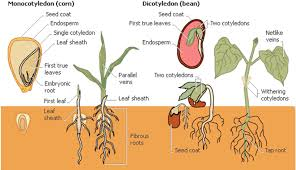Back to: Agricultural Science Primary 5
Hey lovelies
Welcome to class
TOPIC: CLASSIFICATION OF CROPS ACCORDING TO THEIR FORMS
The simple meaning of classification is grouping. To put a group of items into various groups based on different specified criteria. For instance, pupils in a class can be grouped based on age bracket, state or ethnicity, complexion, height etc.
ACTIVITY
- Consider the pupils in your class, and classify them based on the following
- Religion
- Gender
- Complexion
- Based on the classification above, how many boys and how many girls.. How many are Muslims and how many are Christians?
We can classify all crops in various ways, mainly: according to forms and lifespan and according to types and uses.
Classification of Crops According to Forms and Lifespan
Crops differ in their forms and lifespan. The form of a crop is the arrangement of its external parts (its parts that can be seen) in such a way that can be used to identify it. For example, a bean seedling has its parts arranged differently from a maize seedling.
Classification of crops according to their forms: There are two major forms of crop plants: monocotyledons and dicotyledons. Monocotyledons or monocotyledonous crops are crops that have one seed leaf buried in the soil after germination. An example is the maize seedling. The seed provides food for the plant when it starts to grow.
Dicotyledons or dicotyledonous crops, on the other hand, are crops with more than one seed leaves carried above the soil after germination. An example is the bean seedling. The cotyledons supply the seedling with food after germination. They also protect the stem of the seedling when it first appears above the soil.






EVALUATION
- Mention two ways by which crops can be classified
- Differentiate between monocotyledons and dicotyledons.
ASSIGNMENTS:
- ——— have one seed leaf a)monocotyledons b)dicotyledons c) fruits
- Classification of plants into monocotyledons and dicotyledons are based on a) life span b) forms c) Uses
- —– and —– are examples of monocotyledons a) corn and orange b) onions and mango c) corn and rice
THEORY
- Briefly explain the following with examples
- Monocotyledonous plants
- Dicotyledonous plants

Please can you show me the classification of crops based on their nutrient
please can you show me the classification of crops based on their economic and practical uses